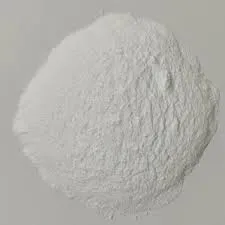The Uses of Pentoxifylline A Multifunctional Therapeutic Agent
Pentoxifylline, a synthetic methylxanthine derivative, is primarily known for its ability to improve blood flow and reduce blood viscosity. It was initially developed to treat intermittent claudication, a condition characterized by pain and cramping in the legs due to inadequate blood flow during physical activity. However, its therapeutic uses extend far beyond this singular application, making it a versatile medication in various clinical settings.
Mechanism of Action
Pentoxifylline acts by decreasing blood viscosity and enhancing erythrocyte (red blood cell) flexibility. This action improves microcirculation in tissues, especially those with compromised blood supply. The drug inhibits platelet aggregation and reduces the formation of fibrinogen, leading to better blood flow. Additionally, pentoxifylline has anti-inflammatory properties that can be beneficial in treating various conditions characterized by inflammation and impaired circulation.
Clinical Uses
1. Peripheral Arterial Disease (PAD) The most well-known use of pentoxifylline is in the treatment of PAD, particularly for patients with intermittent claudication. By improving blood flow, pentoxifylline alleviates symptoms, enabling patients to walk longer distances without pain. Clinical studies have demonstrated that it can significantly improve the quality of life for individuals suffering from this debilitating condition.
2. Diabetic Neuropathy Recent research has suggested that pentoxifylline may be effective in managing diabetic neuropathy. Its ability to enhance circulation can alleviate symptoms of neuropathic pain associated with diabetes, potentially offering relief to millions of affected individuals.
3. Chronic Venous Insufficiency (CVI) Patients suffering from chronic venous insufficiency often experience symptoms such as leg swelling, pain, and ulcers. Pentoxifylline has shown promise in treating CVI by improving blood flow and reducing symptoms associated with venous stasis, thereby enhancing the healing of skin ulcers.
pentoxifylline uses

4. Wound Healing Due to its properties that enhance microcirculation and promote better oxygenation in tissues, pentoxifylline has been studied for its role in wound healing. It may be particularly beneficial in treating chronic wounds, including diabetic foot ulcers and pressure ulcers. By improving blood supply to the affected areas, pentoxifylline can accelerate the healing process and reduce the risk of infection.
5. Cancer Treatment Emerging studies suggest that pentoxifylline may have a role in cancer care, particularly in managing radiotherapy-induced damage. It has been investigated for its potential to protect healthy tissues from radiation toxicity and enhance the effectiveness of certain anticancer therapies.
6. Tissue Ischemia Pentoxifylline is also used in the management of conditions involving tissue ischemia, such as during surgery or following traumatic injuries. By enhancing blood flow, it may help to protect tissues from injury due to lack of oxygen.
Side Effects and Considerations
Pentoxifylline is generally well-tolerated, but like all medications, it has the potential for side effects. Common side effects include gastrointestinal disturbances, headache, dizziness, and flushing. In rare cases, more serious side effects may occur, necessitating caution when prescribing to patients with certain underlying conditions. Additionally, it is essential to evaluate potential drug interactions, as pentoxifylline can affect the metabolism of other medications.
Conclusion
In summary, pentoxifylline is a multifaceted therapeutic agent with a wide array of uses beyond its initial indication for peripheral arterial disease. Its ability to improve blood flow, reduce inflammation, and promote healing makes it a valuable option in various clinical scenarios, including diabetic neuropathy, chronic venous insufficiency, and wound healing. Ongoing research continues to unveil new potential applications, positioning pentoxifylline as a crucial tool in the management of vascular and inflammatory disorders, ultimately enhancing patient outcomes and quality of life. As with any medication, careful consideration of the risks and benefits is essential to optimize its therapeutic potential.

